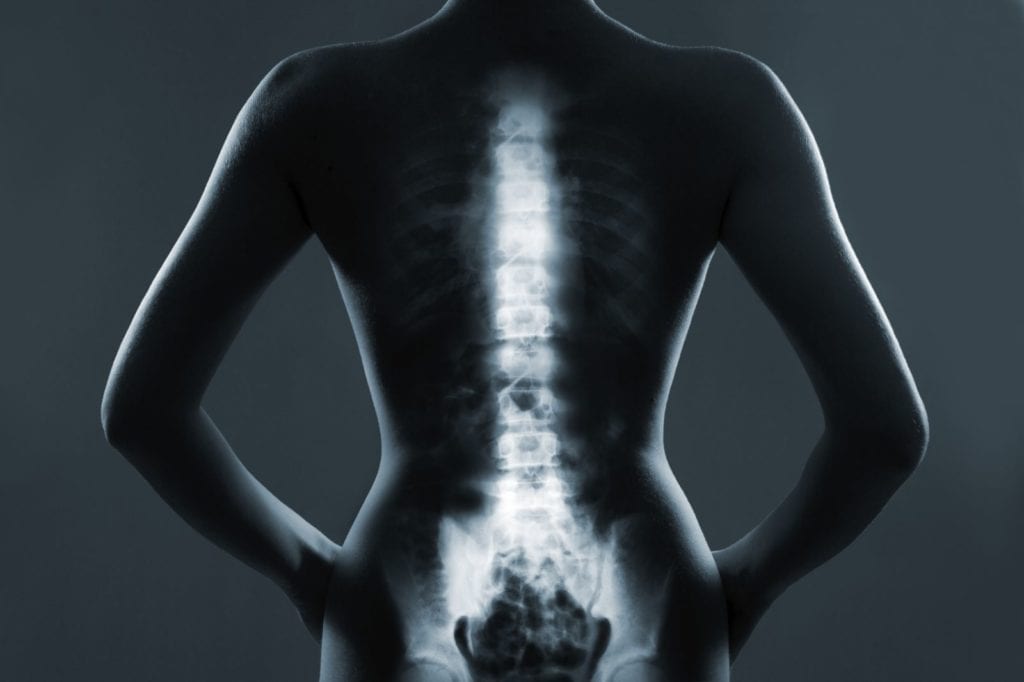
Back pain is the number one cause of disabilities in the US and in western countries in general. The spine carries a great load, and even though lumbar (lower back) pain is a common complaint, it’s just as feasible to have pain in your thoracic (upper back) spine or cervical (neck) spine. It makes sense. This vertical framework is built with a number of bones all cushioned with discs and fibrous, connective tissue.
These discs naturally wear out with age, usage, and sometimes simply genetics. There’s no such thing as a straight spine—humans are, by nature, not really symmetrical. Somatic symptoms can often show up in the spine, too. This is the body’s physical way of responding to trauma, and sometimes this appears in strange ways.
For instance, a girl who was (or is) self-conscious of her large chest might slouch and stoop in order to minimize it. It can be conscious or unconscious. However, after a few months or years, this will suddenly become her posture. Being in a state of constant spinal flexion and rare extension can have a host of side-effects. Back pain will almost certainly be one of them.
If you want to keep your back in great health, the best day to start is today. Almost everyone can benefit from paying a little more attention to their back. Here are seven techniques to try out, but remember that it’s always best to check with a medical professional first before drastically changing your routines:
- Regularly flex, extend, and laterally move your back. Most people prefer to be in a state of regular flexion (slouching) or extension (a slight backbend). However, the spine is designed to move in many directions, and this includes laterally (side to side). If you don’t use it, you lose it. Moving the spine is one of the best things you can do for it. While it’s not necessarily bad to have a preference of flexion or extension, trouble can creep in when that’s the only direction you put your spine in.
- Regularly see your GP. Back pain might be common but that doesn’t mean it isn’t something to worry about. The best thing you can do for your overall health, including spinal health, is to regularly see a GP for a checkup. If you do notice anything painful or strange about your back, speak up. The earlier a potential issue is caught, the easier it is to correct.
- Work on back strength. Everyone can benefit from a stronger back. It helps this part of your body out, which is critical since it has such a big job. It literally carries heavy loads and has many muscles, ligaments, tendons, and bones that could use strengthening. The tiny muscles between the vertebrae are often ignored, and some of those back muscles can simply be hard to target with common exercises. Working with a personal trainer can help you get a more comprehensive strength training regimen created.
- Go to yoga. Yoga teaches you how to feel and move aspects of your body that are ignored in other movement practices. You’ll likely discover that some of your vertebrae is “fused” together, and through yoga, you can find out strategies to correct this. Exploring movement and stretching not only feels good but is also beneficial to your back.
- Make sure you’re getting enough calcium. Calcium and weight-bearing exercises are the building blocks of healthy bones. However, the only way to know if you’re getting enough calcium is through a vitamin deficiency screening. It’s easy to add in a little more of this must-have nutrient, even if it means taking a daily supplement. Vegans and non-dairy folks might be at a particularly high risk of calcium deficiency.
- Consider how previous vices might have impacted spinal health. Some drugs can interfere with bone functioning, particularly if they were taken for recreational usage. Addiction can also keep you from focusing on total body health. If you need to kick drugs with treatment or follow up with an addiction services clinic, know that your entire health will benefit from it. In some cases, prescription drug abuse can even lead to a quickening of bone density loss.
- Catch arthritis early. There are many types of arthritis and some, like osteoarthritis, can benefit from treatment and lifestyle changes. Again, the earlier it’s caught and addressed, the easier it is to treat.
Your back has a big job and is often taken for granted. Keep yours healthy by giving it a little extra TLC. From exercises to alternative therapies, there are a number of options for a healthier and stronger back with less pain.
